Top tips for organising a pantry – all the expert advice and tricks you need
Goodbye cupboard chaos! A pantry or larder can be the perfect food storage solution if you sort it properly
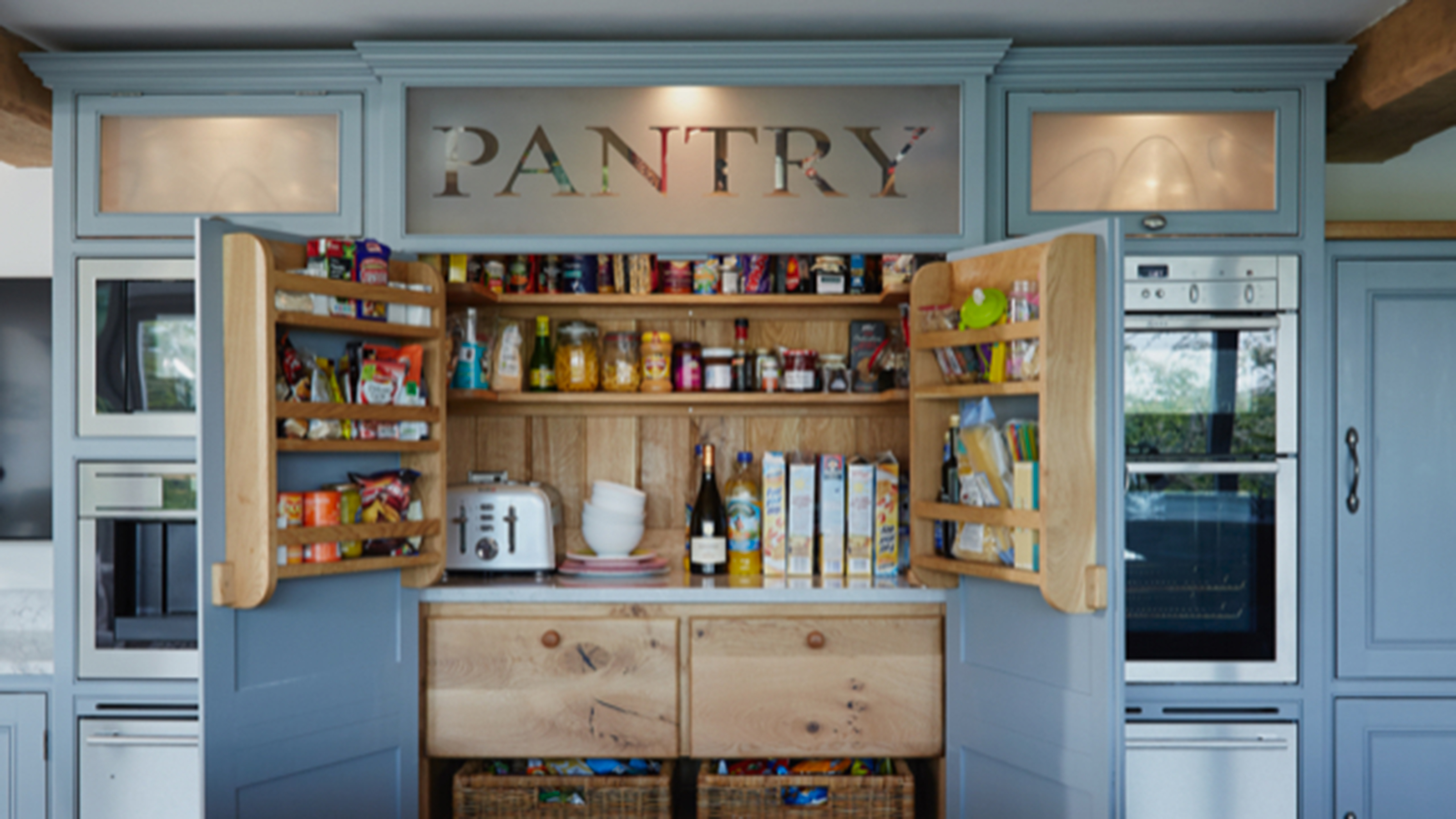

Often at the top of most people's list when it comes to kitchens is having a pantry or pantry cupboard to keep all those store cupboard staples in order, but they can easily become disorganised and cluttered.
Just as important as organising kitchen cabinets, organising a pantry couldn't be simpler and with some simple storage tips and tricks you can make it work for you. 'Being able to hide away a multitude of products in an organised manner will result in a truly functional kitchen, while leaving your countertops clutter-free,' says Alex Main, Director, The Main Company.
'To organise your pantry storage, first start by asking yourself what items you really need and use on a daily basis,' explains Al Bruce, founder of Olive & Barr. 'Whether you have a large space or a smaller kitchen, getting creative with your storage solutions will make sure your kitchen always feels clutter-free.'
How to organise a pantry: declutter step by step
Before you start ordering stylish jars and boxes to store everything, the first step when organising any space is to declutter and plan how to make best use of the space. Follow this step-by-step guide to decluttering a pantry...
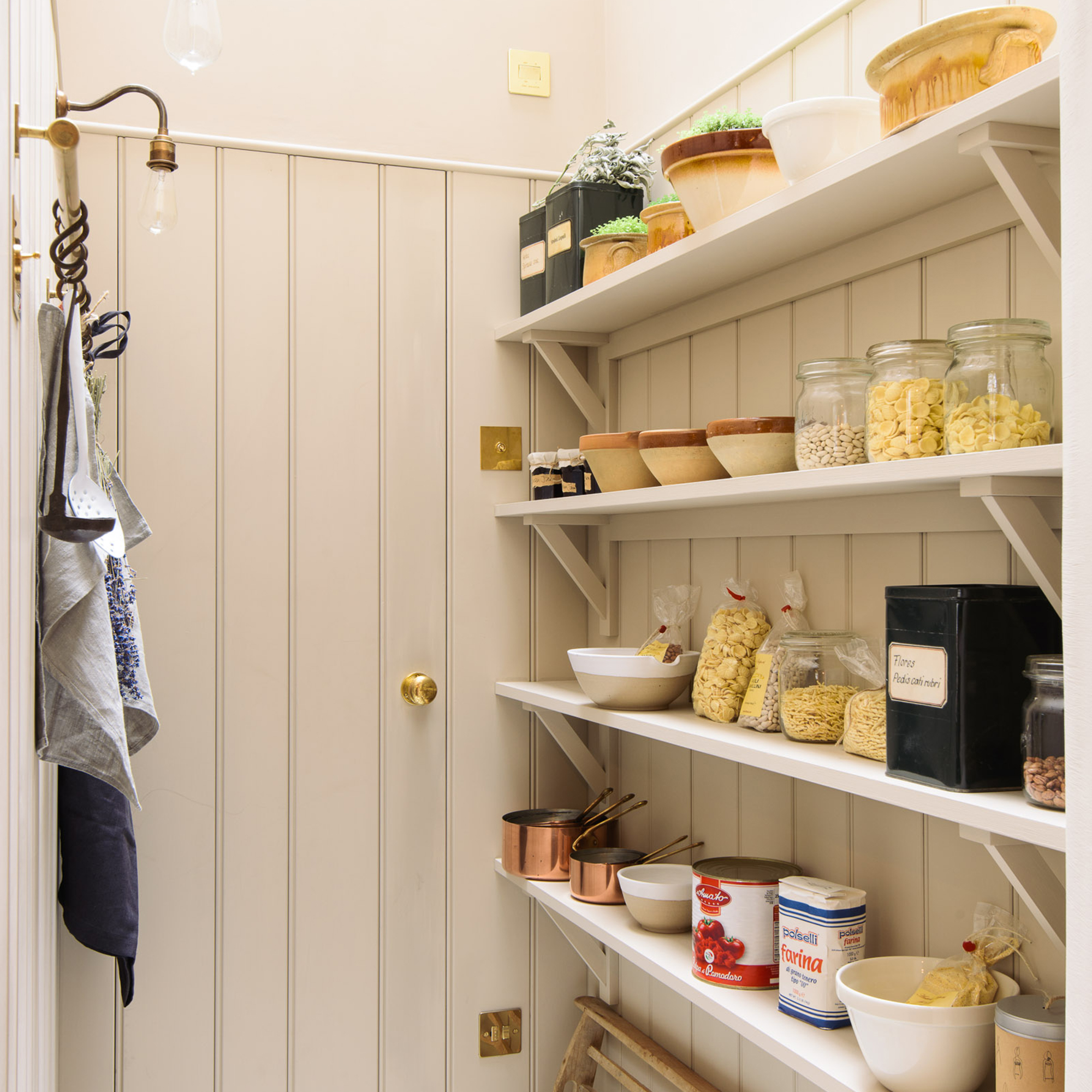
1. Take a stock inventory
'First of all, remove everything from your pantry and do a purge on your items,' says Jacqueline McLeod, communications director of The Association of Professional Declutterers and founder of Bancrofts Organisation Services. 'Check expiry dates, and also consider whether you will use the items that are still in date. If not, why not donate them to a food bank.'
2. Give it a good clean
The best way to declutter your pantry is to completely empty it, that way you can give it a good clean (using the best cleaning products, of course), dusting and wiping over shelves. If your shelves are adjustable, make sure any storage jars or canisters fit comfortably on them. If not, adjust the height so they fit.
3. Decide on storage
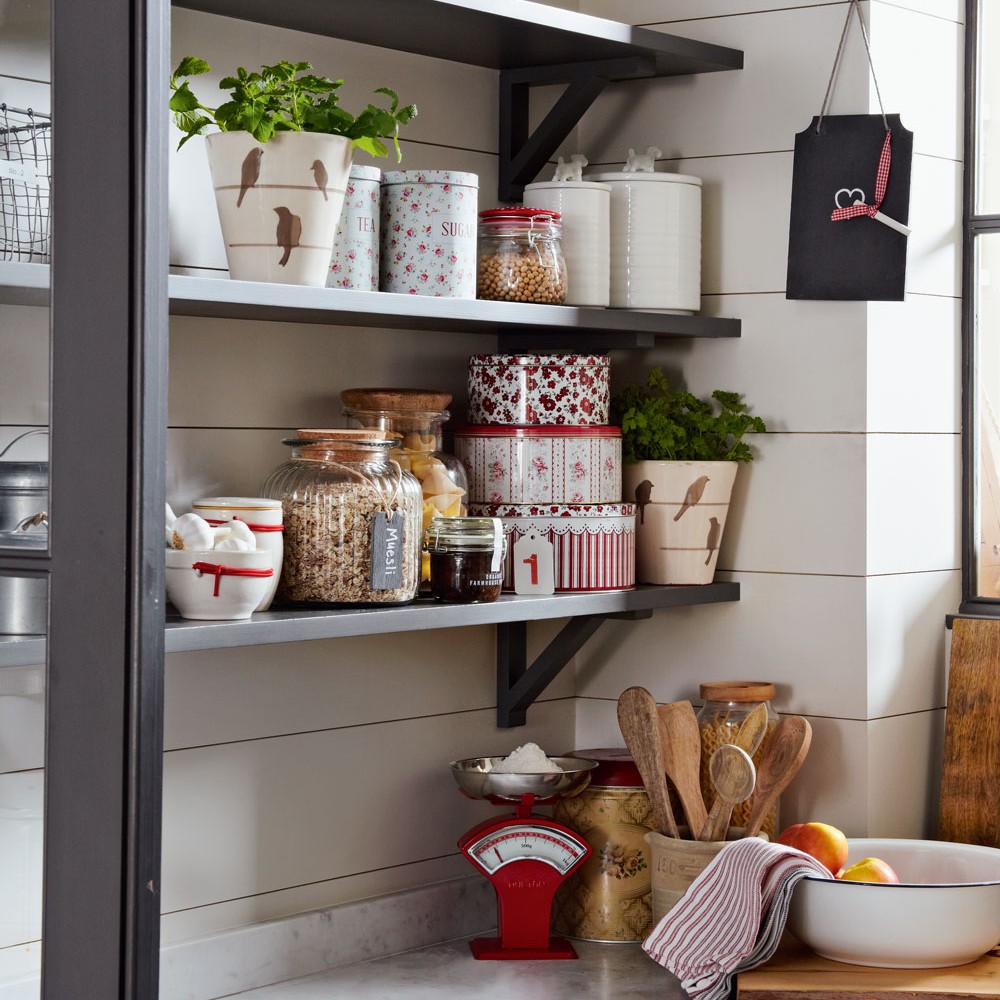
Storage is key when it comes to organising a pantry. Plan how you will divide up your pantry and what you will store items in. Don't just pick storage jars because they look good, they need to be practical too.
Get the Ideal Home Newsletter
Sign up to our newsletter for style and decor inspiration, house makeovers, project advice and more.
Stacking plastic containers will help make the most of a small pantry, while baskets are ideal for storing things like cereal bars and fruit. Lazy Susans (we love this Lazy Susan Turntable from Amazon) are a good way of storing bottles of condiments so you can easily rotate them to find what you need.
4. Divide and rule
When organising your pantry divide it into sections to help make things easier to find and group similar items together, such as:
- Dried goods like pasta, rice, lentils and noodles
- Baking ingredients and baking equipment
- Canned food
- Snacks
- Essentials like tea, coffee, sugar
- Spices and stock cubes
- Nuts and dried fruit
- Cereals and breakfast items
5. Make it accessible
The fun part is putting everything back. 'Now think about where you want to position different categories,' says Jacqueline. 'Make sure you put the everyday frequently used items in easy reach, and less used items higher up, such as lighter bulk bought items.' To make things easier, store heavier items on lower shelves with lighter items higher up.
6. Stay organised
Keeping your pantry organised will make things easier in the long run explains Jacqueline. 'Get into the habit of doing a mini-declutter and reorganisation of your pantry each month to help maintain it.' That way you can keep track of what you need and when. This is particularly true if you're trying to keep on top of how to organise a small kitchen, where clutter can easily take over.
Organising a pantry – clever tips and tricks
1. Create a breakfast station

A popular way to use larder cupboards is to set them up as a breakfast station, as in this kitchen from Kitchen Masters. It's a great way to make mornings easier, with everything in one place and you can just shut the door when you're done! Pop in your best toaster plus your bread bin to make quick breakfasts a breeze.
2. Keep items within easy reach
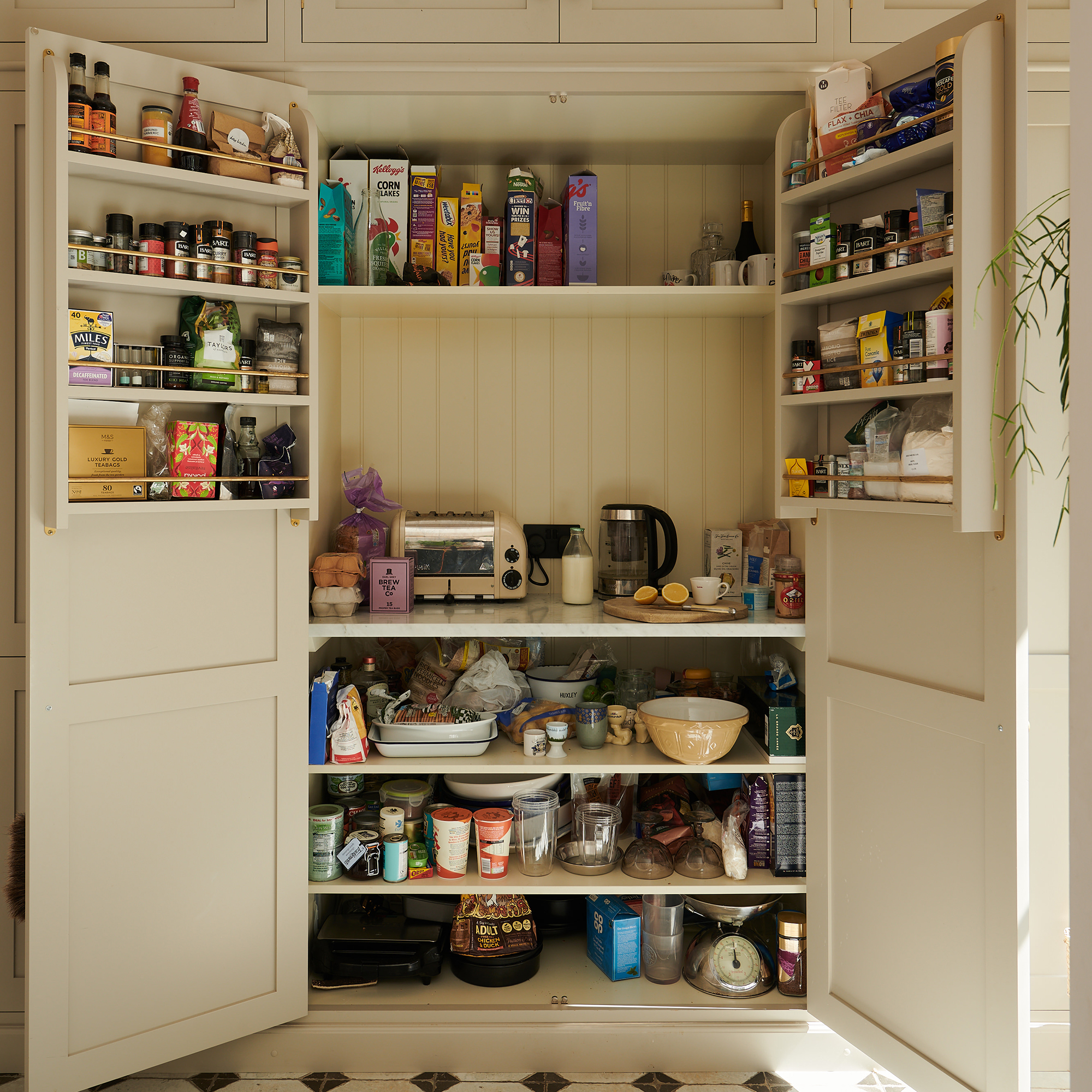
Aim to keep heavy items on the lower shelves to make it easier and safer when you need to get them. If your pantry has a large work surface you could set up things like your food mixer or a blender in there so that your kitchen worktops stay clear.
3. Choose practical shelving
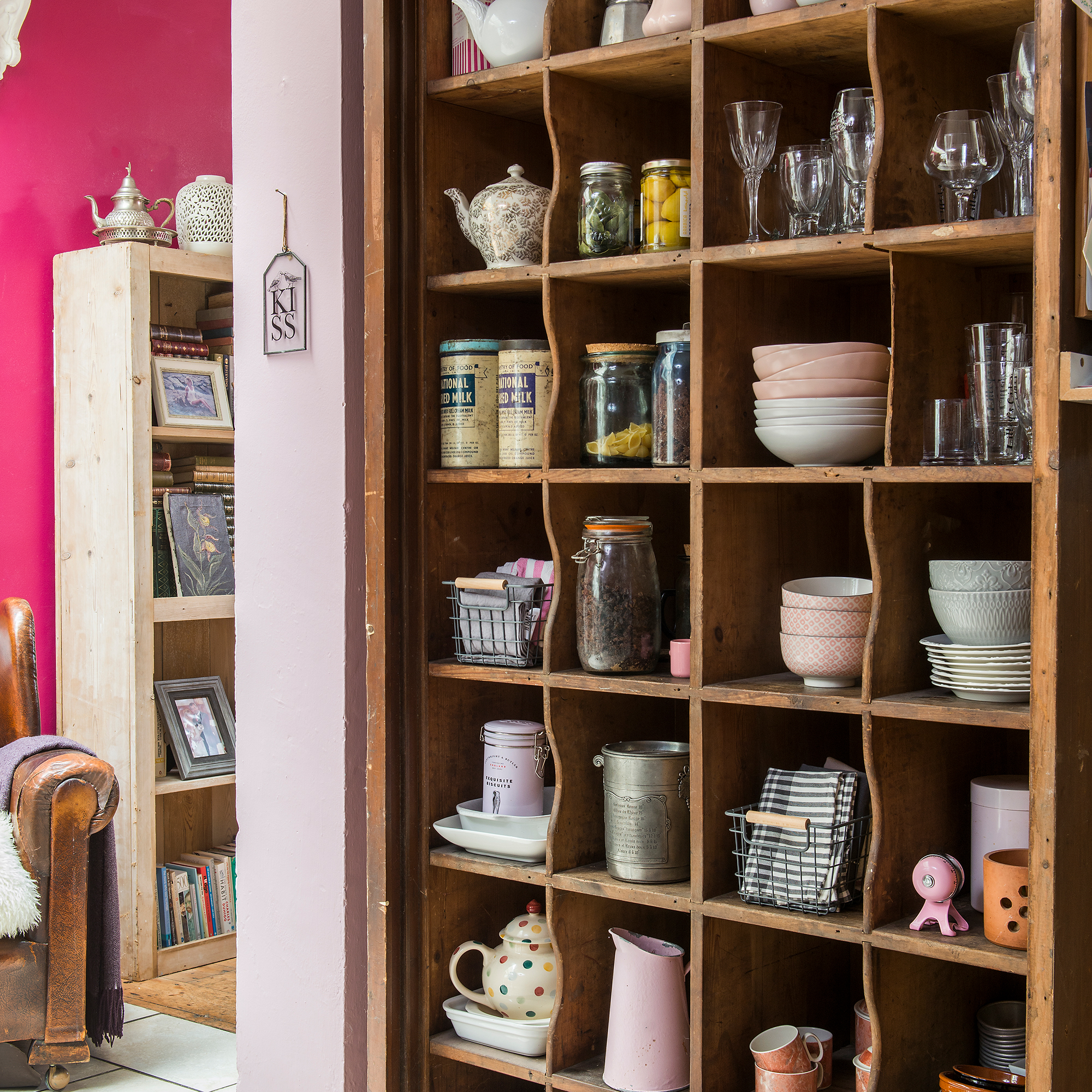
One of the key ways to make organising your pantry easier is to use kitchen shelving ideas to suit your needs. A vintage shelving unit with lots of cubby holes will make it easy to store everything into different sections (plus it looks great too). Alternatively, using flexible shelving where you can change the height of shelves means you can always adapt the space as you need.
4. Make use of every inch
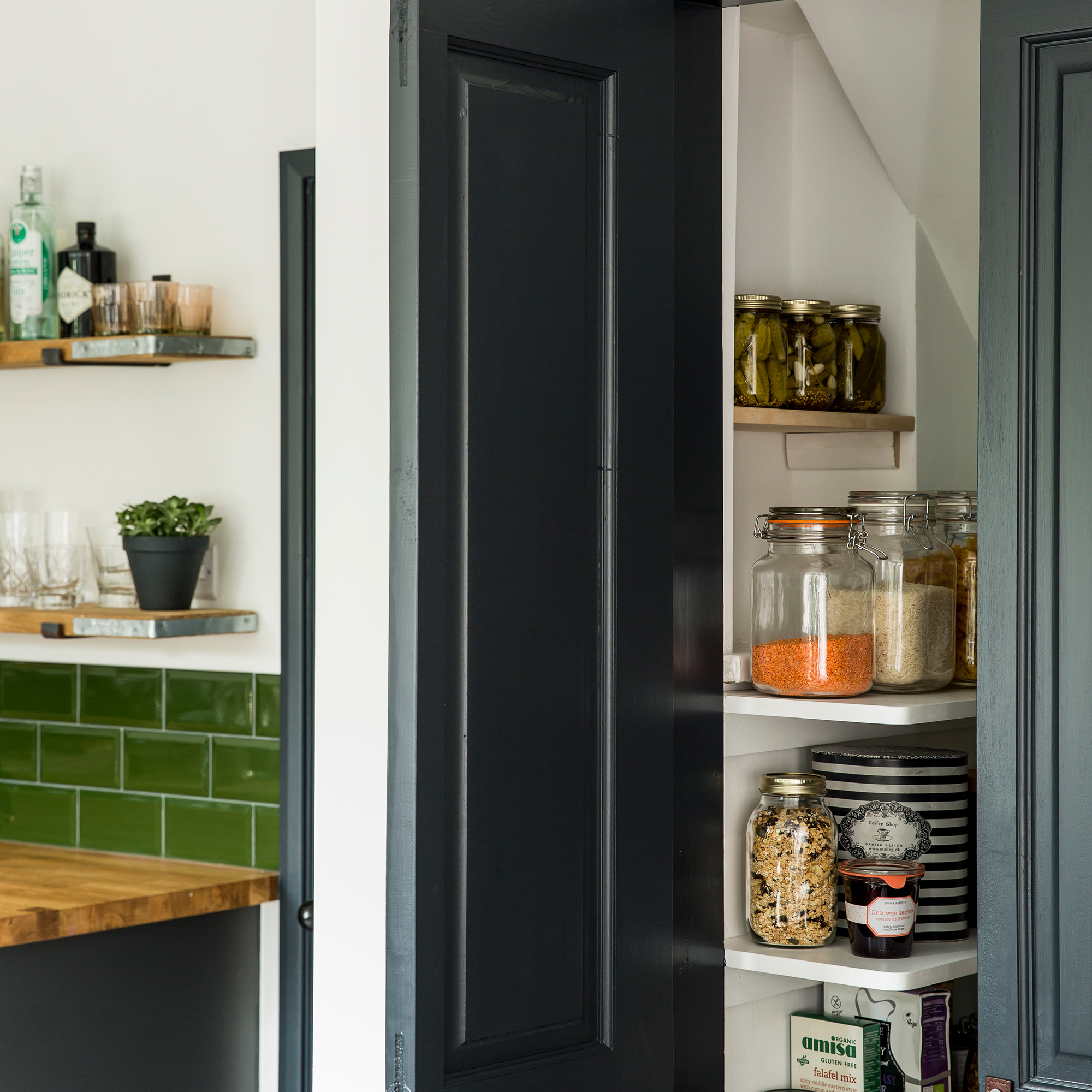
If you only have a small pantry (or you're squeezing it into a small utility room idea), you can quickly utilise the space to make the most of it. Even a few smaller shelves in a tiny nook will make the ideal spot for storing jars or stackable containers.
5. Utilise space behind a door
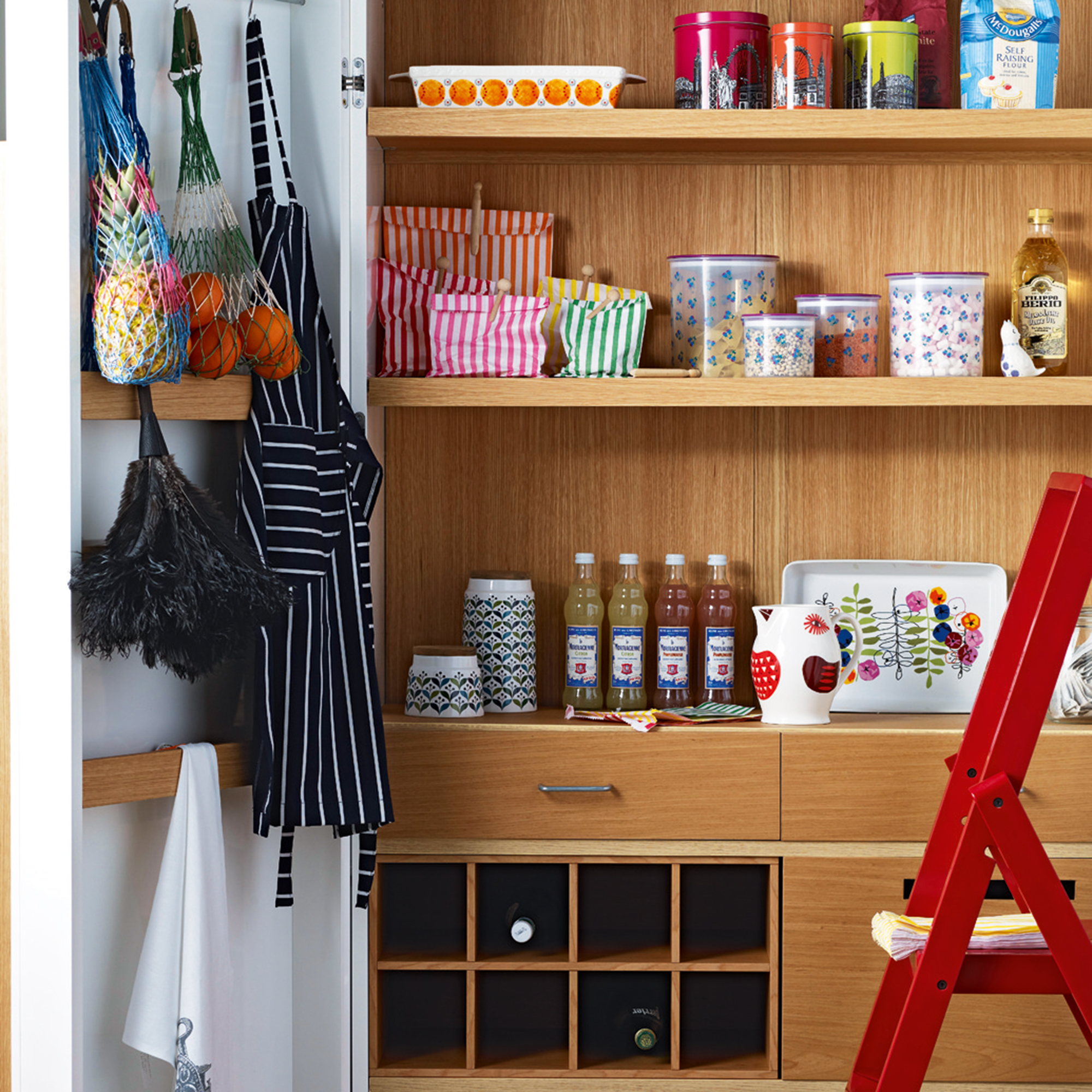
The back of a pantry door is another great place that can be used for storage. A few well-placed hooks mean aprons and tea towels can be kept out of sight. On the door to a larger pantry you could secure a plastic bag dispenser for keeping shopping bags tucked out of the way.
6. Invest in stackable containers
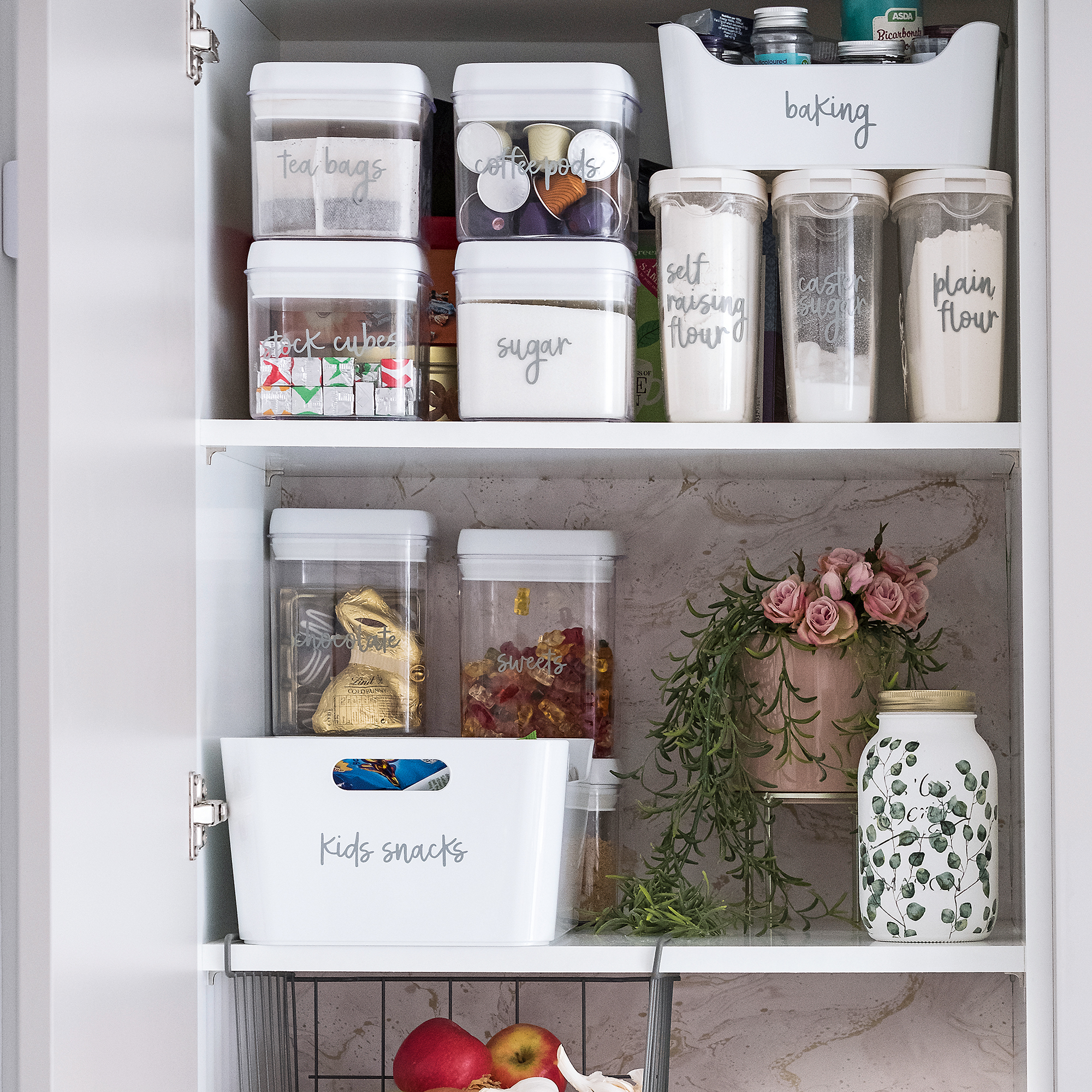
If you have to move lots of things out of the way to find something, it's easy to lose track of what you have. This is where stackable storage comes into its own, not only do they help to keep food fresher for longer but it will make it easier to organise each shelf. Just make sure you label containers so you don't forget what is stored in each one. Salt and sugar can look very similar! Make a feature of the labels by going for something with style appeal such as chalkboard labels or these Cursive Kitchen Pantry labels from Amazon.
7. Use jars for storage
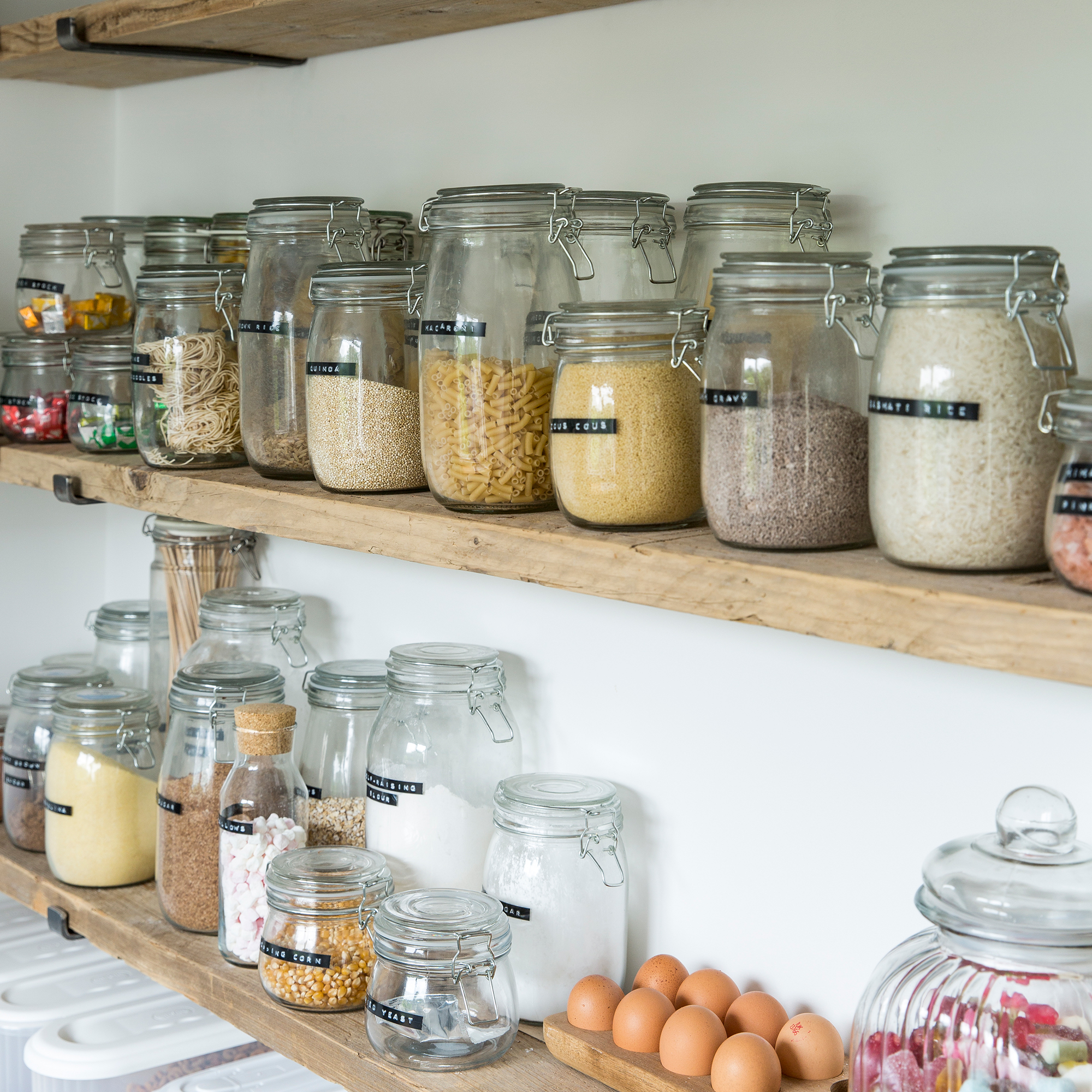
If you prefer a more traditional style, simple jars can be picked up cheaply and look great when your essentials are decanted into them. Use a Dymo label maker to create labels for each one. The plus side of using glass jars is that they are easily cleaned in the dishwasher when they need a refresh or if you need to use the jars for something else.
8. Organise your spices
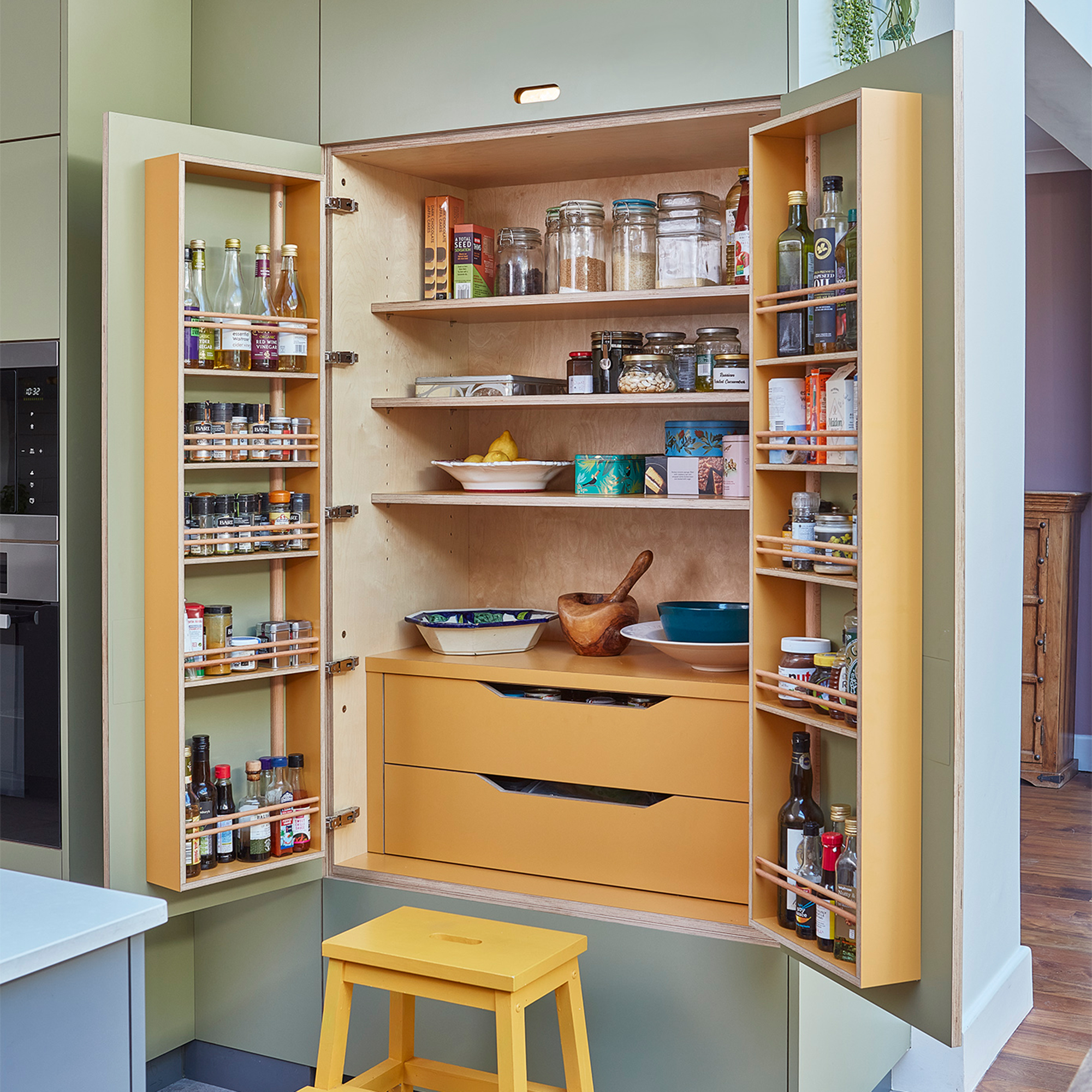
It can take ages to find herbs and spices if they are all jumbled together at the back of a cupboard. Storing them on dedicated racks on the back of a door will help keep them organised. 'Don't forget about any extra wall space or the back of the door,' says Ben Burbidge, managing director, Kitchen Makers. 'They are perfect for designing spice racks and space to place kitchen tools which can hang from hooks.'
How do you organise a small pantry?
'Creating an organised space is about zoning,' says Ben. 'Start by working out where the most appropriate areas are for each type of product you wish to store. Keeping each food category together will make it far easier to locate what you need.'
How can you organise a pantry cheaply?
Making things easy to find is the key for an organised pantry. 'Adding sticky name labels will allow you to quickly identify your ingredients, making it easier to locate items when cooking,' says Sarah Savery-Smith, brand director at ProCook.
What should go on the top shelf in a pantry?
Keep items which are not often used on the top shelf, things like table linens and crockery for Christmas as you'll only be using it once a year. Also lighter items are best stored high as they are easier to grab when needed. No one wants to struggle trying to lift a heavy food processor from a high shelf!

Amy Hodge has been working on interiors magazines for over 11 years. She's a freelance writer and sub editor who has worked for some of the UK's leading interiors magazines including Ideal Home, Style at Home and Country Homes & Interiors. She started at Style at Home just after it launched as food editor and is now chief sub editor for Ideal Home, Style at Home and Country Homes & Interiors.
-
 Should your front door colour match your hallway? Interior experts reveal 3 reasons why it should (and 3 reasons it shouldn't)
Should your front door colour match your hallway? Interior experts reveal 3 reasons why it should (and 3 reasons it shouldn't)Are you team matching or contrasting?
By Ellis Cochrane
-
 This £200 limited-time discount makes this Dyson vacuum cheaper than I’ve ever seen it - run don’t walk to Argos for this bargain
This £200 limited-time discount makes this Dyson vacuum cheaper than I’ve ever seen it - run don’t walk to Argos for this bargainIt's the most affordable Dyson on the market right now
By Lauren Bradbury
-
 Martin and Shirlie Kemp’s pastel flower beds has given their Victorian renovation a romantic look - how you can get the look
Martin and Shirlie Kemp’s pastel flower beds has given their Victorian renovation a romantic look - how you can get the lookTheir pastel garden is the cottage garden inspo you've been looking for
By Kezia Reynolds